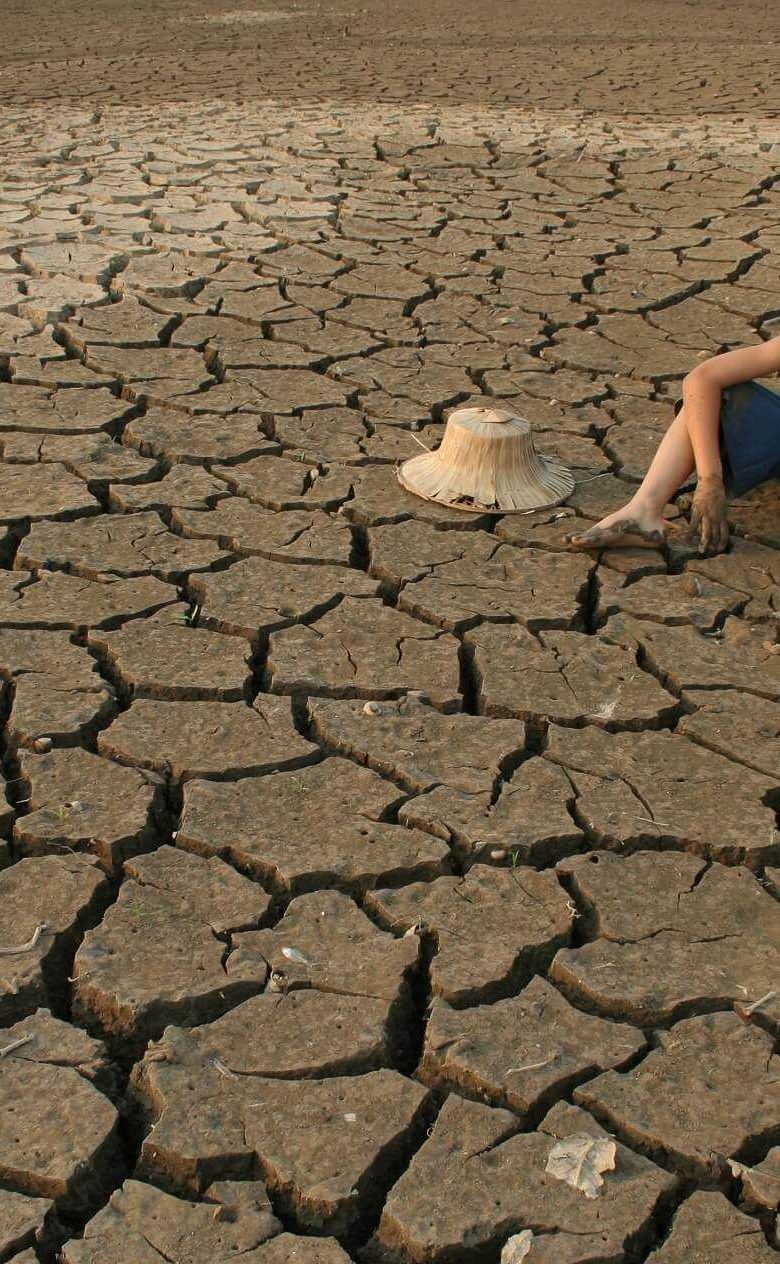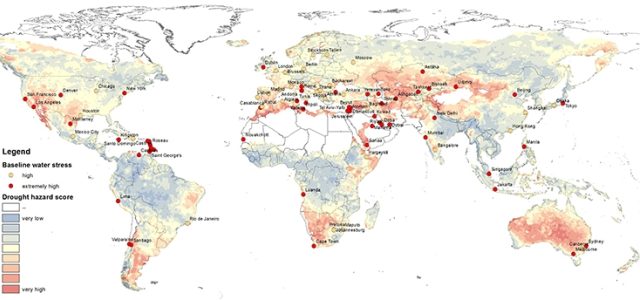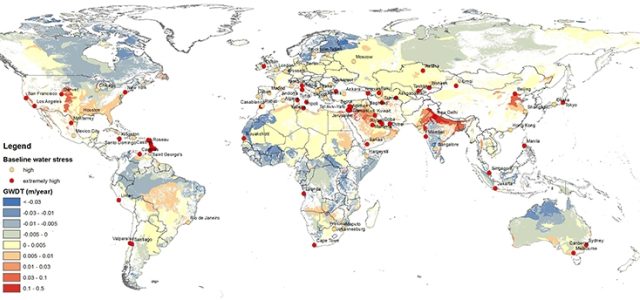Drought in cities: a global problem
There are no fewer than 54 cities worldwide with a high risk of drought. Our solution? Knowledge about water systems and good governance. Read more about this in this blog by groundwater expert Dimmie Hendriks.

Around the world, many cities are located in areas where water use is high by comparison with the available renewable water sources, even though these cities need water for all their inhabitants and activities. Water shortages can have a major impact on supplies of drinking water, industrial productivity and agricultural yields in the surrounding areas.
They can drive away business and industry, hamper agricultural activity, degrade urban prosperity and, in the most extreme cases, even lead to social unrest and migration.Cities in areas with severe water stress where there is a high risk of drought (periods during which less water than usual is available) are particularly likely to run out of water periodically (Figure 1, Table 1). In urban areas where there is little surface water, high levels of water consumption are often met by pumping up large amounts of groundwater.
This approach is generally not sustainable and it leads to falling groundwater levels as well as the depletion of shallow and fossil groundwater resources. Cities in areas with severe water stress and where stocks of groundwater have fallen sharply will find it more difficult in the future to get through periods of drought (Figure 2). Almost half of the 54 cities that suffer from major water stress, and also from drought periods and/or rapidly-falling groundwater levels, are in Asia, and particularly in the Arabic countries there.
This is because the dry conditions here are accompanied by increasing economic activity and expanding cities (and therefore high levels of high water consumption). The same also applies to Europe, where some cities already have water shortages and falling groundwater levels, especially in periods of drought. It is striking that London, which is in a relatively northern location, suffers from water shortages and periods of relative drought because of the high level of water consumption.


Overview of cities in areas with large water stress that also have periods of drought and/or rapidly-falling groundwater levels:
- Severe drought risk and sharply falling groundwater levels: Ashgabat, Baku, Canberra, Cape Town (high drought hazard upstream), Houston, San Marino, Sydney, Tripoli.
- Severe drought risk: Algiers, Amman, Ankara, Astana, Baghdad, Bangalore, Beirut, Bucharest, Casablanca, Damascus, Hargeysa, Jerusalem, Lima, Lisbon, London, Los Angeles, Luanda, Madrid, Monaco, Monterrey, Rabat, San Francisco, Sanaa, Santiago, Skopje, Tashkent, Tirana, Tunis, Urumqi, Valparaiso
- Sharp fall in the groundwater level: Beijing, Denver, Doha, Dubai, Jakarta, Kuwait, Manama, Melbourne, Mexico City, New Delhi, Riyadh, Rome (incl. Vatican City), Shanghai, Tehran, Tel Aviv-Yafo, Tokyo.
Limiting the drought risks in urban areas
Cities affected by water shortages, periods of drought and declines in the availability of groundwater resources can reduce the negative impact of water scarcity by using technical solutions that make them better prepared for periods of drought. In addition – and almost equally importantly – cross-border strategic measures will often need to be agreed upon and implemented. An important first step is to enhance our understanding of the water system, water use and drought risks. The following points are therefore important:
- Awareness among all water management authorities and user groups in and around the city is essential for the creation and implementation of plans for water conservation and water distribution. Coordination and cooperation with all parties is the basis for good water governance. It is important here to have shared knowledge about the water system, drought characteristics, water availability and water use. This knowledge base can be made available using an interactive tool. Discussing and refining this information with all parties involved provides a good starting point for water management plan that enjoy widespread support.
- Mapping out and describing the water system and water use in the city and the surrounding river catchment. Cities are located in river catchments and they are largely dependent not just on rainfall but also on surface water and groundwater. The specific natural characteristics of catchments and upstream water use have a major effect on water availability in cities. The design of reservoirs, the use of the subsurface for water storage, and the specific technical measures in place to reduce water shortages must also be properly tailored to the catchment of the specific city.
- Groundwater plays a special role. When there is a drought, the use of groundwater by farmers, business and private individuals often increases significantly. The risk is that the natural resilience of the water system may be affected and, in the worst case, exhausted altogether. Groundwater levels fall below the levels needed for nature and agriculture. Rivers fall dry, or do so faster than they used to, and lakes get smaller. Stimulating infiltration and the storage of water in the subsurface during wet periods can create excellent opportunities for retaining water more and better. During dry periods, this water can be used to meet the needs of users in the city, the surrounding agricultural and natural areas.
- A sound risk analysis can teach us a lot about drought risks and ‘hot spots’ in and around the city. A picture is established of the drought risks now and in the future by combining the drought characteristics with information about the potential impact of droughts and water shortages, making it clear which economic sectors and water users are hit hardest during a drought, now and in the future, and showing the drought-related risks affecting the city. It can be useful to conduct regular drought stress tests for the urban area to identify current drought risks and ensure that adequate action can be taken in good time.
- The establishment of a drought forecast system. A system of this kind can be set up on the basis of a combination of online, real-time drought information and local information about the water system and potential impact of droughts. A drought forecast system provides timely seasonal and daily information about drought hazards and risks, making it possible to be better prepared, to respond in time and to take adequate steps to mitigate the negative impact of a drought. It is important for there to be a clear protocol describing how the drought forecast can be used in decision-making about water use for all relevant stakeholders.
- Socio-economic decision making about water supplies. If water shortages and droughts in the urban area are structural or increasing, long-term decisions will have to be made about the importance of the water supply for the various economic sectors and water users during droughts. The time horizon here is 30 to 50 years. A predictive hydro-economic analysis can be performed before decisions are made. In analyses of this kind, the economic and social effects on the water system are mapped out by simulating the various scenarios in order to lay down a sound basis for the decisions.
You have not yet indicated whether you want to accept or reject cookies. This means that this element cannot be displayed.
Or go directly to:

